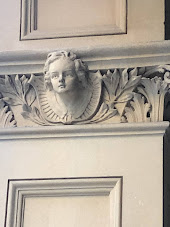'Wyoming" - Macqaurie Street - Sydney
"Wyoming" is a historic building located at 131-135 Macquarie Street in Sydney, Australia. It holds architectural and historical significance as one of the city's well-preserved heritage buildings. Here's an overview of its history:
Construction and Architecture:
- "Wyoming" was constructed in the mid-19th century, between 1841 and 1843.
- The building's design reflects the Regency architectural style, which was characterized by symmetry, classical elements, and a sense of grandeur.
Original Ownership:
- The building was originally built as a private residence and was one of the prestigious homes along Macquarie Street, which was known for housing Sydney's elite.
- It was constructed for Captain John Piper, a former military officer and prominent figure in early colonial Sydney.
Prominent Residents:
- Captain John Piper, the original owner, lived in "Wyoming" until his death in 1851. He was known for his role as the Colonial Treasurer and his involvement in various colonial affairs.
Subsequent Uses:
- After Captain Piper's death, "Wyoming" went through various ownership changes and uses. It served as a residence for different families and individuals over the years.
Conversion into Offices:
- In the 20th century, as the city's urban landscape evolved, "Wyoming" was converted into office spaces while maintaining its historical facade and architectural features.
Heritage Significance:
- "Wyoming" is recognized as a heritage-listed building, reflecting its historical and architectural importance in Sydney's history.
Architectural Features:
- The building features a symmetrical design, with a central entrance and grand Ionic columns supporting a pediment.
- Its ornate detailing and classical elements are representative of the Regency architectural style.
Historical Context:
- "Wyoming" is a tangible link to Sydney's colonial past, showcasing the architectural tastes and lifestyle of the city's early elite.
Preservation and Restoration:
- Efforts have been made to preserve and maintain the historical and architectural features of "Wyoming."
- Its location in Macquarie Street places it in proximity to other historic landmarks, contributing to the cultural and heritage character of the area.
"Wyoming" remains an important piece of Sydney's architectural and historical fabric. Its Regency design and connection to prominent colonial figures make it a valuable representation of the city's past and its ongoing efforts to preserve its heritage.
"Wyoming" is a historic building located at 131-135 Macquarie Street in Sydney, Australia. It holds architectural and historical significance as one of the city's well-preserved heritage buildings. Here's an overview of its history:
Construction and Architecture:
- "Wyoming" was constructed in the mid-19th century, between 1841 and 1843.
- The building's design reflects the Regency architectural style, which was characterized by symmetry, classical elements, and a sense of grandeur.
Original Ownership:
- The building was originally built as a private residence and was one of the prestigious homes along Macquarie Street, which was known for housing Sydney's elite.
- It was constructed for Captain John Piper, a former military officer and prominent figure in early colonial Sydney.
Prominent Residents:
- Captain John Piper, the original owner, lived in "Wyoming" until his death in 1851. He was known for his role as the Colonial Treasurer and his involvement in various colonial affairs.
Subsequent Uses:
- After Captain Piper's death, "Wyoming" went through various ownership changes and uses. It served as a residence for different families and individuals over the years.
Conversion into Offices:
- In the 20th century, as the city's urban landscape evolved, "Wyoming" was converted into office spaces while maintaining its historical facade and architectural features.
Heritage Significance:
- "Wyoming" is recognized as a heritage-listed building, reflecting its historical and architectural importance in Sydney's history.
Architectural Features:
- The building features a symmetrical design, with a central entrance and grand Ionic columns supporting a pediment.
- Its ornate detailing and classical elements are representative of the Regency architectural style.
Historical Context:
- "Wyoming" is a tangible link to Sydney's colonial past, showcasing the architectural tastes and lifestyle of the city's early elite.
Preservation and Restoration:
- Efforts have been made to preserve and maintain the historical and architectural features of "Wyoming."
- Its location in Macquarie Street places it in proximity to other historic landmarks, contributing to the cultural and heritage character of the area.
"Wyoming" remains an important piece of Sydney's architectural and historical fabric. Its Regency design and connection to prominent colonial figures make it a valuable representation of the city's past and its ongoing efforts to preserve its heritage.









































